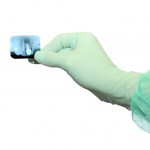
In most cases, traditional root canal therapy undertaken through the crown of the tooth provided good results. However, the complexity of the root canal system means that failure rates between 4-15% are reported. While re-treatment is normal the first choice in these cases it is not always possible and periapical surgery and retrograde filling may be required.
The aim of this Cochrane review was to determine the effects of different materials used for retrograde filling in children and adults for whom retrograde filling is necessary in order to save the tooth.
Methods
Searches were conducted in the Cochrane Oral Health’s Trials Register); the Cochrane Central Register of Controlled Trials (CENTRAL); Medline; Embase; Chinese BioMedical Literature Database; China National Knowledge Infrastructure; OpenSIGLE ; Sciencepaper Online ClinicalTrials.gov and World Health Organization International Clinical Trials Registry Platform without restriction on the language or date of publication. Randomised controlled trials (RCTs) that compared different retrograde filling materials, with reported success rates assessed by clinical or radiological methods with a follow-up period of at least 12 months were considered. Standard Cochrane data collection and analysis methods were followed.
Results
- 6 studies involving 916 patients (988 teeth) were included.
- All 6 studies were at high risk of bias.
- The studies looked at 5 different comparisons
- MTA versus intermediate restorative material (IRM),
- MTA versus super ethoxybenzoic acid cement (Super-EBA),
- Super-EBA versus IRM,
- dentine-bonded resin composite versus glass ionomer cement and
- glass ionomer cement versus amalgam.
- There was therefore little pooling of data and very little evidence for each comparison.
- There is weak evidence of little or no difference between MTA and IRM at the first year of follow-up RR=1.09; (95%CI: 0.97 to 1.22); quality of evidence: low.
- Insufficient evidence of a difference between MTA and IRM on success rate at the second year of follow-up RR=1.06; (95%CI: 0.89 to 1.25); quality of evidence: very low.
- All the other outcomes were based on a single study.
- None of the studies reported an adverse event.
Conclusions
The authors concluded
Based on the present limited evidence, there is insufficient evidence to draw any conclusion as to the benefits of any one material over another. We conclude that more high-quality RCTs are required.
Comments
For many years amalgam was used for retrograde root-end filling but this was increasingly questions for a range of issues including corrosion, moisture sensitivity, mercury contamination of periapical tissue and the potential hazards associated with mercury-containing materials. Amalgam gave way to zinc oxide eugenol (ZOE) containing materials, such as intermediate restorative material (IRM), and recently mineral trioxide aggregate (MTA) use has increased.
Unfortunately all the available trials identified for this review were either of low or very low quality so do not provide sufficient evidence to demonstrate the benefits of any one material over another. One of the included studies ( Song et al 2012) has been the subject of one of our earlier blogs ( Dental Elf- 4th Jul 2012).
Links
Primary paper
Ma X, Li C, Jia L, Wang Y, Liu W, Zhou X, Johnson TM, Huang D. Materials for retrograde filling in root canal therapy. Cochrane Database of Systematic Reviews 2016, Issue 12. Art. No.: CD005517. DOI: 10.1002/14651858.CD005517.pub2.
Other references
Cochrane Oral Health Group Blog- Filling materials for retreatment of failed root canals
Dental Elf- 4th Jul 2012
